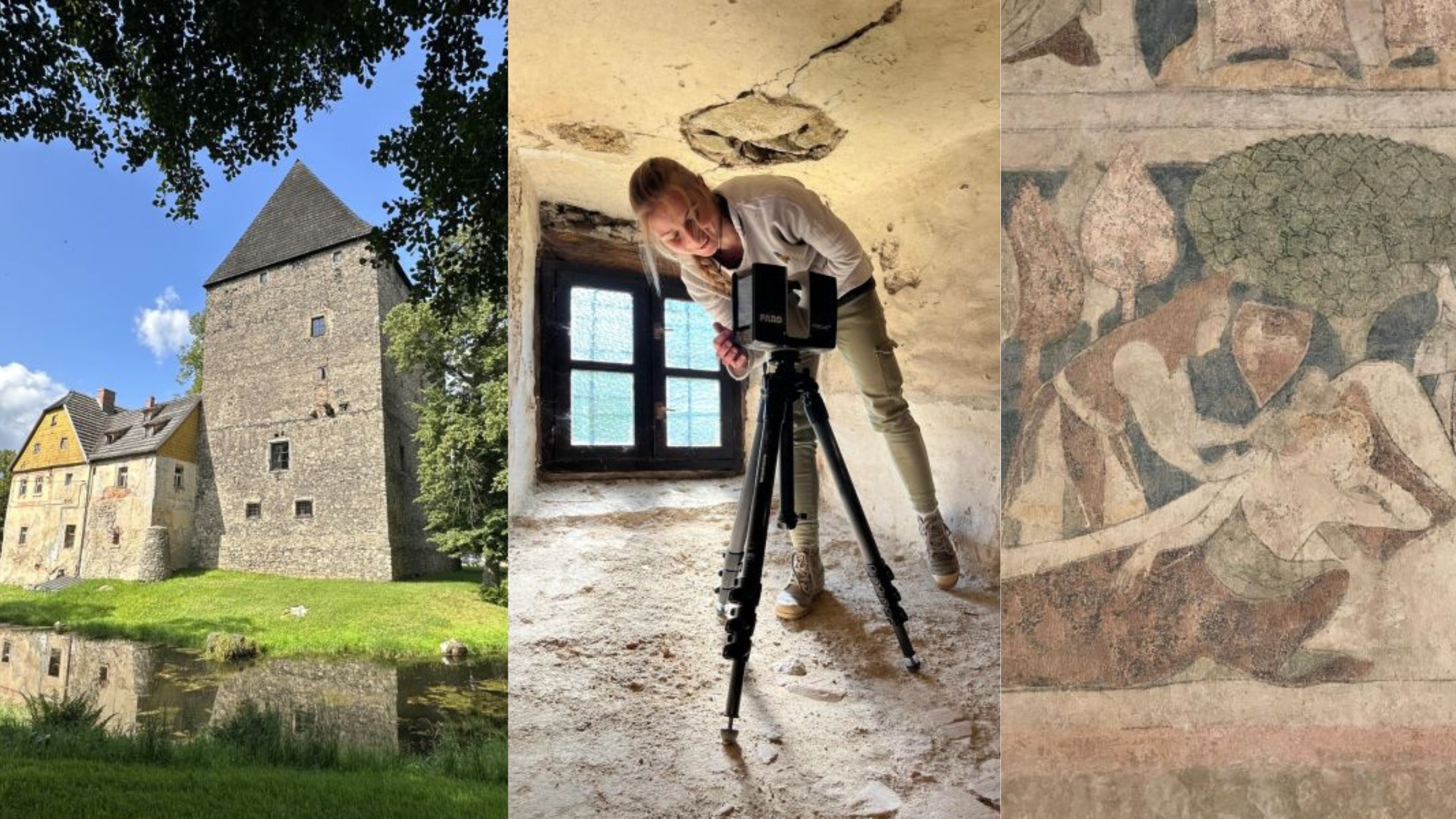
"Built around 1313, likely on the initiative of Henry I, Duke of Jawor, the tower once stood as both a residence and a defensive structure. It was constructed on a rectangular plan, measuring 20 by 14.5 metres, with six levels including a basement, three residential floors, and a battlemented walkway. Surrounded by a moat and defensive wall, it overlooked a key crossing of the Bóbr River, controlling an important communication route between Lusatia, the Czech lands, and northern Poland."
"On the second floor, the great hall preserves a cycle of polychrome paintings from 1320-1330, created by artists from the Swiss-German border region. The central panel shows St Christopher carrying Christ across the water - an image of courage and loyalty that resonated strongly with medieval knights. Even more remarkable are the adjacent panels: the world's only medieval wall paintings still in their original place that depict episodes from the legend of Sir Lancelot."
Extensive documentation combines archaeological expertise with advanced digital technology to preserve the 14th-century Siedlęcin ducal tower, its architecture, and rare wall paintings. The tower, built around 1313 likely by Henry I, Duke of Jawor, comprised six levels including a basement, residential floors, and a battlemented walkway. It stood within a moat and defensive wall above a strategic crossing of the Bóbr River connecting Lusatia, the Czech lands, and northern Poland. Alterations after a 1575 fire rebuilt upper storeys, added a new roof, 16th-century windows, and bay latrines. The second-floor great hall preserves polychrome paintings from 1320–1330, including St Christopher and unique in situ depictions of Lancelot scenes depicting chivalry and courtly love.
#siedlecin-ducal-tower #medieval-wall-paintings #lancelot--arthurian-legend #digital-archaeological-documentation
Read at Medievalists.net
Unable to calculate read time
Collection
[
|
...
]